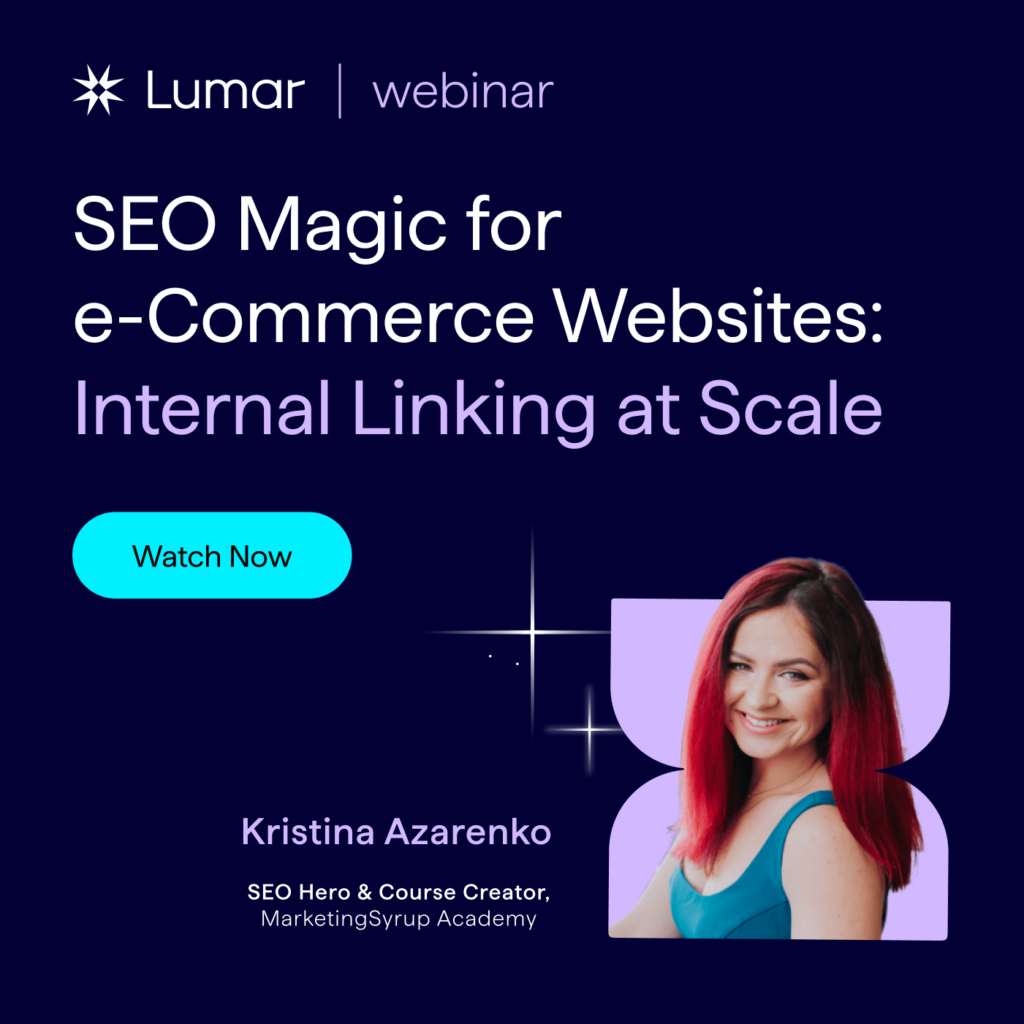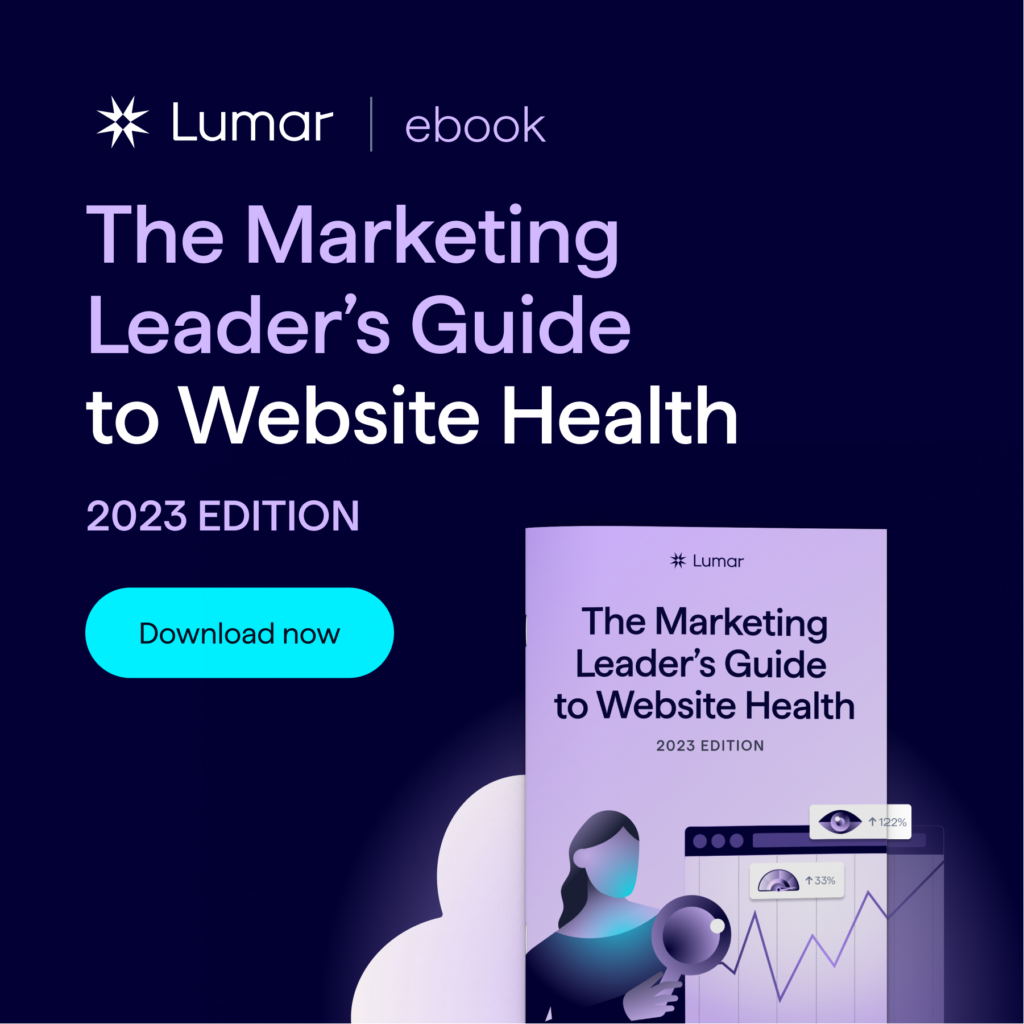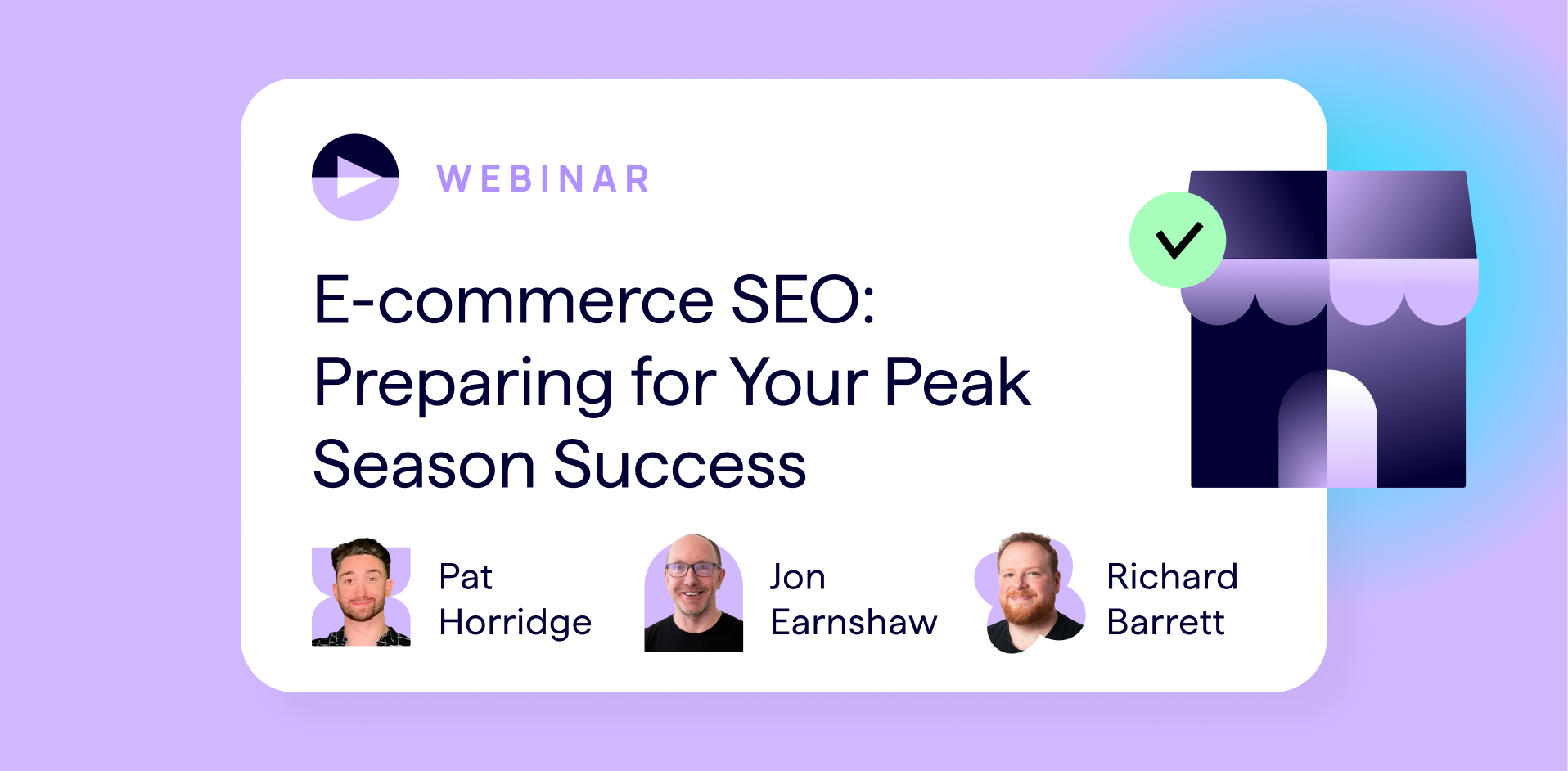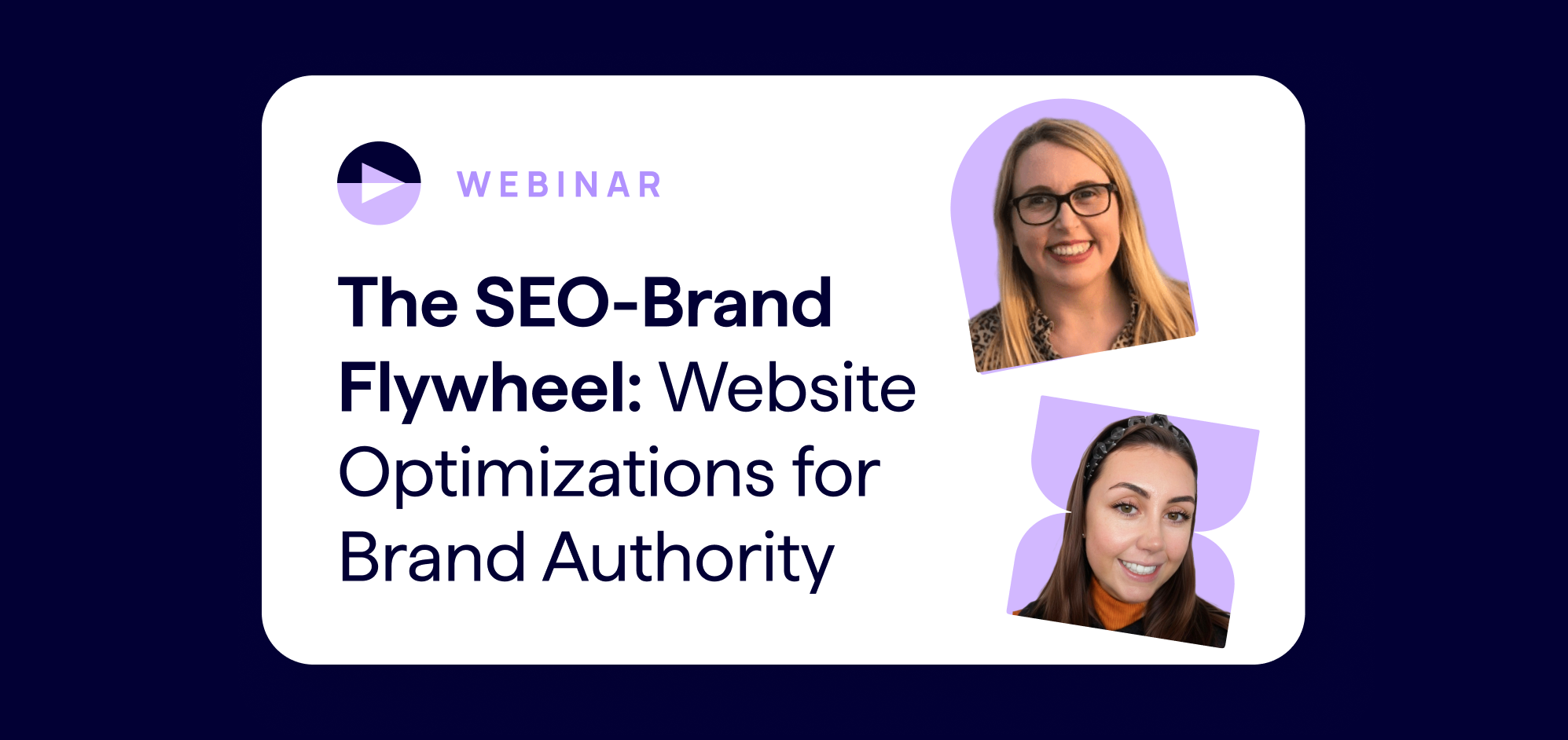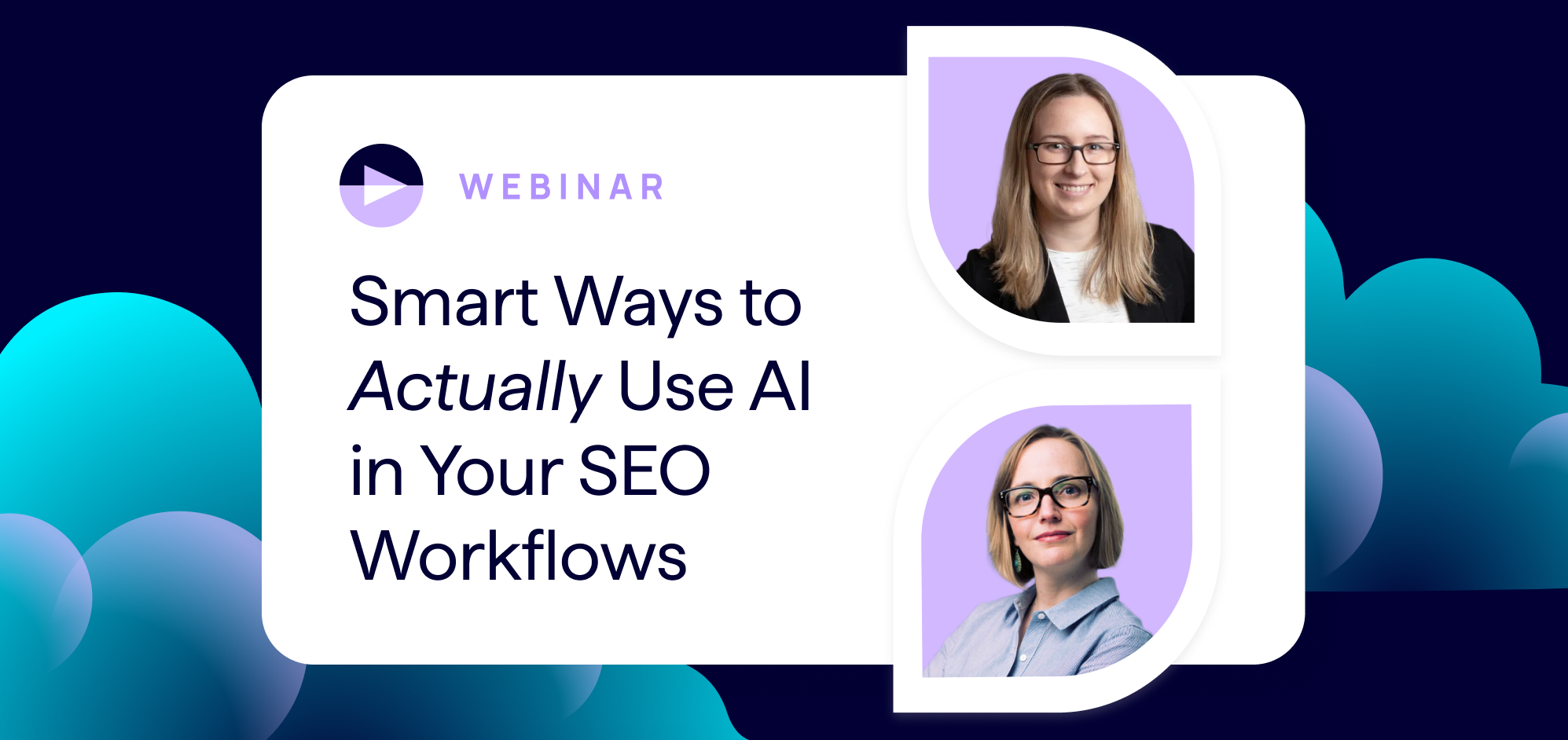SEO can play a major role across the entire customer journey — it’s not just about driving top-of-funnel brand awareness. The latest in Lumar’s ongoing webinar series offers actionable tips for building out SEO strategies to support your full buyer’s journey, from awareness to purchase and beyond.
Our presenter, Sophie Brannon, Director of SEO at RushOrderTees, and host Jon Myers, Founder and Managing Director at Ascending Media, cover SEO approaches for:
- TOFU (Top of Funnel)
- MOFU (Middle of Funnel)
- BOFU (Bottom of Funnel)
- And ongoing brand loyalty and engagement
Watch the full webinar (including Q&A session!) above, or read on for our top takeaways.
SEO and the buyer journey
SEO, as a marketing tactic, can do more than just focus on driving transactions and leads through organic search. While search engine optimization is essential for visibility in the SERPS, SEO should also serve as an assist to other marketing channels such as PPC, social media, and email marketing, according to Brannon.
“There is so much more that SEO can cover — so much more of the marketing landscape that we’re able to distribute target audience to,” Brannon says.
The more seamless the journey between channels is for your users, the higher the chances that you can win against your competitors.
Brannon notes that, traditionally, user journeys are projected as linear. But today, this isn’t always the case. An average B2B buyer journey involves 13 pieces of content across all channels, according to Brannon. In the DTC space, the journey across channels is similarly higher than you might expect. Brannon says the average DTC consumer engages with 11.7 content pieces across channels.
“How can the buyer journey be so linear when there is so much that people are consuming before they even make a decision?” asks Brannon.
In short, customer journeys are more complex than they ever have been.
“You need to consider every single touchpoint along that user journey,” Brannon adds.
The AIDA marketing model framework has expanded
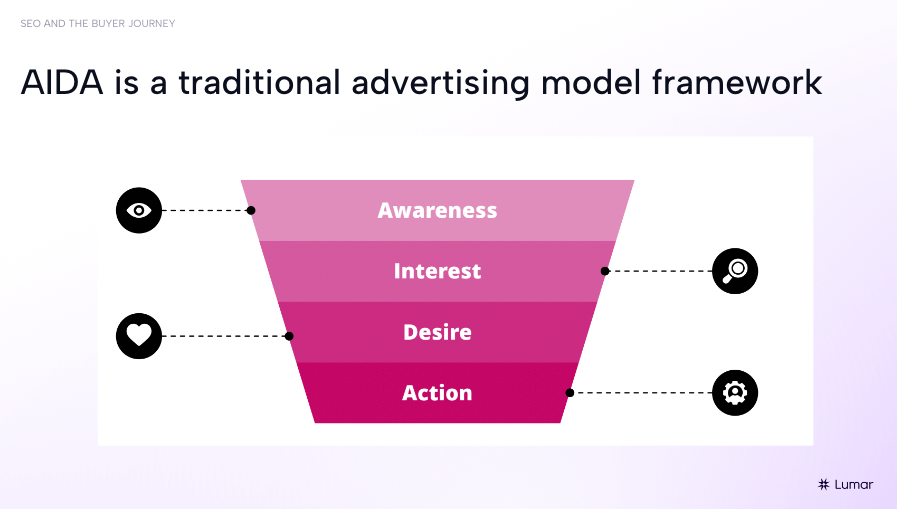
“AIDA is a really traditional advertising model framework,” Brannon explains. It boils down to four key stages:
- Awareness
- Interest
- Desire
- Action
But today’s buyer journey is more complicated.
“But really, this has evolved so significantly over the years,” says Brannon, “We’re looking at other avenues such as consideration, evaluation, and then past the point of action, at engagement and loyalty.”
Customers today expect companies to understand their needs and expectations.
“That means for the content you’re producing at every single stage of that conversion journey — awareness, interest, consideration, evaluation, action, engagement, or loyalty — a large proportion of your customers expect you’re going to know what they need and that you’ll be able to answer [those needs].”
“To adhere to [those expectations], you need to consider every single touch point along the user journey,” says Brannon.
She suggests mapping out the different types of content and different topics and questions that customers are going to have across the buyer journey as a starting point, so you can really tie together your overarching SEO strategy across all the journey stages, from the top of the funnel (TOFU), through the middle of the funnel (MOFU) and through to the bottom of the funnel (BOFU) and ongoing customer engagement.
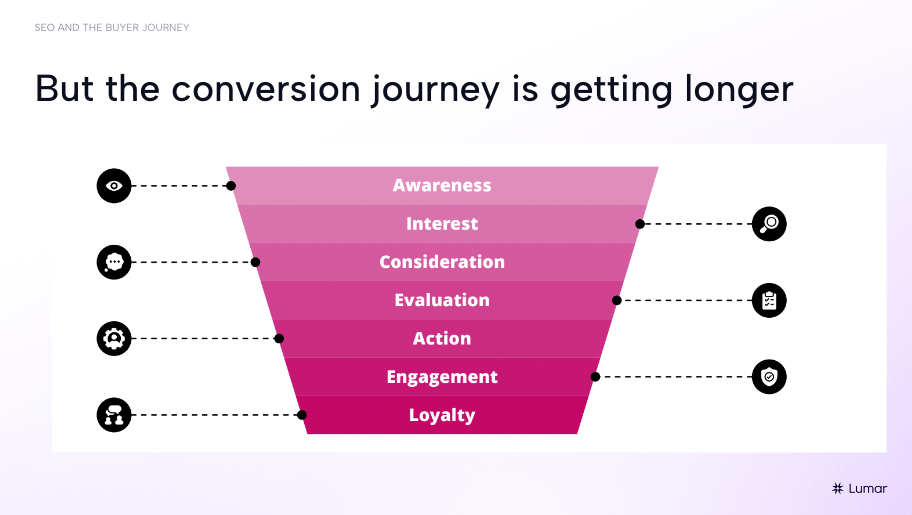
TOFU / Top of Funnel (Awareness Stage) SEO Content
The top of the funnel (or ‘awareness’ stage) is that moment in the buyer’s journey when they know they have a problem, but they don’t yet know how to fix it, according to Brannon.
![SEO customer journey webinar slides - Text on slide reads: TOFU Awareness Stage - [Customers/Prospects] know they have a problem - they don't know how to fix it.](https://www.lumar.io/wp-content/uploads/2023/09/TOFU-Awareness-Stage-Webinar-Slide-SEO-Customer-Journey.png)
The awareness stage can be broken down even further:
- Unaware consumers may be those users who are simply browsing and have not yet heard of your brand and are not yet thinking about a particular problem or solution.
- Problem-aware consumers may know they have a problem, but they might be unsure how deep it is and not know what solutions exist to fix it.
- Solution-aware consumers may know they have a problem and know they need a solution but don’t know where to go for it.
- Product-aware consumers may know of your product or brand but don’t yet know why they need it.
- Most aware consumers may know the problem, product, and/or brand, but not yet know where to go for it.
Brannon reminds us that SEO is not always about pushing people to purchase. It can help us build relationships with consumers, position the brand as an authority, and pre-position the product as a logical solution.
Types of TOFU content
TOFU content, in an SEO strategy, should answer questions related to long-tail keywords. This content may include:
- Blog posts
- Whitepapers
- Podcasts
- Videos
- Social media posts
Whatever the content types you’re using at the top of the funnel, Brannon says this content should boost brand awareness and promote interaction with your business. She reminds us that consumers may not buy from you immediately after engaging with this awareness stage content, but they’ll now know you’re an authority in the space your company represents.
TOFU, or awareness-stage, content helps your brand:
- Build a relationship
- Position your brand as an authority
- Pre-position your product as a logical solution, so you’re the first brand prospects think of when they become more problem- and solution-aware
“It can help capture people who don’t really know what they’re looking for yet,” says Brannon, “It just puts you in front of them regardless.”
The importance of technical SEO at the top of the funnel
Brannon’s last piece of advice about the top of the funnel concerns technical SEO. Technical SEO — that is, the aspects of SEO that relate to your site’s technical set-up rather than keywords — needs to be considered alongside your content. According to an Unbounce report Brannon shares, nearly 70% of consumers say that site speed impacts their willingness to buy from an online retailer.
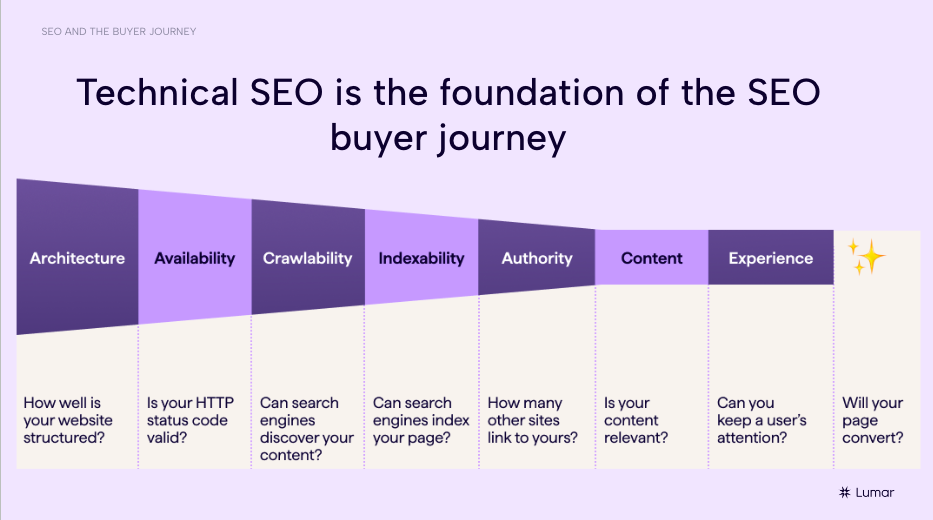
“If you’re frustrating people when it comes to site speed or when it comes to that initial information that they’re trying to find even before they even consider you as a brand they’re going to purchase from, well, ultimately, you’re going to end up with no customers. You’re going to end up upsetting people so much because your page speed is so slow it’s putting people off; they’re never going to get further down that funnel,” explains Brannon.
“So really focusing on that technical SEO aspect first and foremost is quite a helpful thing, before you even start building out that top-of-funnel content.”
MOFU / Middle of Funnel (Consideration Stage) SEO Content
The middle of the funnel (MOFU) is what marketers tend to call the consideration stage. By this point, customers know they have a problem, they know how to fix it, but they are not yet sure why they should choose you.
![SEO webinar slide deck screencap - text reads: Middle of the Funnel - Consideration Stage - They [prospective customers] know how to fix it, they are not sure why they should choose you [your brand].](https://www.lumar.io/wp-content/uploads/2023/09/MOFU-Consideration-Stage-Webinar-Slide-SEO-Customer-Journey.png)
According to Brannon, types of MOFU content include your product pages, category pages, and also promotional materials such as brochures, webinars, downloads, etc. The key here is that these MOFU resources are more product-led, providing specific informative and educational content that relates directly to your product offering rather than being more generic, high-level thought leadership content.
When it comes to SEO, Brannon says MOFU content should align more to your main head terms, showcasing your solution or product, as prospective customers at this stage know they are looking for something specific. This is your chance to show your stuff and answer the questions your problem-aware customers are asking.
Brannon’s tips for creating MOFU content include:
- Speaking to your customer service teams to understand prospects’ needs.
- Building comprehensive Q&A content.
- Showcasing user-generated content (UGC) such as reviews.
The importance of technical SEO at the middle of the funnel
Again, technical SEO is important at the middle of the funnel too. A fast site with well-considered site architecture, strong internal linking, appropriate use of structured data, and minimal friction from a UX perspective is crucial at the MOFU stage.
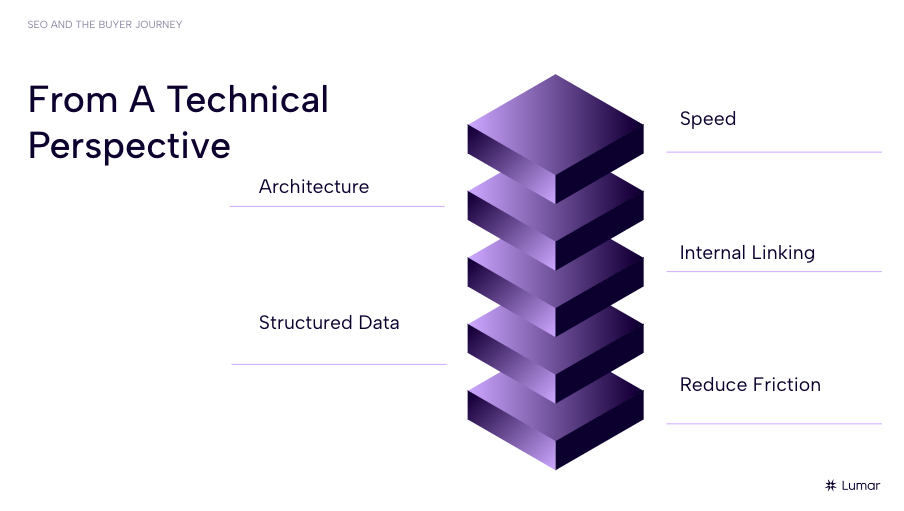
Your site architecture and internal linking matter a lot here, to make sure website visitors can easily navigate to the pieces of support content that will help further nudge them along your buyer journey. Internal linking will also help pass link equity to your most important pages.
Improving UX and page experience across your site also helps reduce friction throughout the user journey, helping users navigate through your most important content.
When it comes to structured data, Brannon says, “Make sure you’ve got everything marked up [with structured data / schema markup]. It’s helpful for Google in order to really prioritize and understand what your website’s about, regardless of whether or not it’s showing rich results.”
BOFU / Bottom of Funnel (Conversion Stage) SEO Content
The bottom of the funnel is the conversion stage of the buyer journey. Your customer is ready to make a purchase, you just need to give them a final nudge to show them exactly why they should be purchasing from you.
Brannon highlights several types of BOFU content that should feature in your SEO strategies:
- Product demo pages
- Detailed PDPs (product display pages)
- Product feature/benefit pages
- Case studies
- Reviews
“Your EEAT [Experience, Expertise, Authority, and Trustworthiness] matters here a lot,” Brannon says, “Reviews show off positive experiences that others have had with your company. Your website content itself —the actual product page content or the demos or case studies — shows your experience and your expertise. And your UGC, your ‘about us’ page, and your contact info pages show how trustworthy you are as a business.”
![SEO Webinar Slide - Google EEAT Best Practices Aligned to BOFU (bottom of funnel) customer journey stage for SEO strategies. Text reads - Reviews show off positive experience. Your website content shows your experience and expertise. Your UGC, about us, contact info shows your [business's] trustworthiness.](https://www.lumar.io/wp-content/uploads/2023/09/EEAT-BOFU-Content-SEO-Webinar-Slide-Customer-Journey.png)
Technical SEO considerations for BOFU content
Again, technical considerations make a massive impact at the bottom of the funnel as well. Working checkouts/lead forms are vital for conversions. Clear CTAs prompt users to buy/sign-up. The user journey needs to be smooth. UX needs to be considered. And, again, pages need to load and render quickly — which means you may want to consider your JavaScript SEO best practices and whether you’re using client-side or server-side rendering.
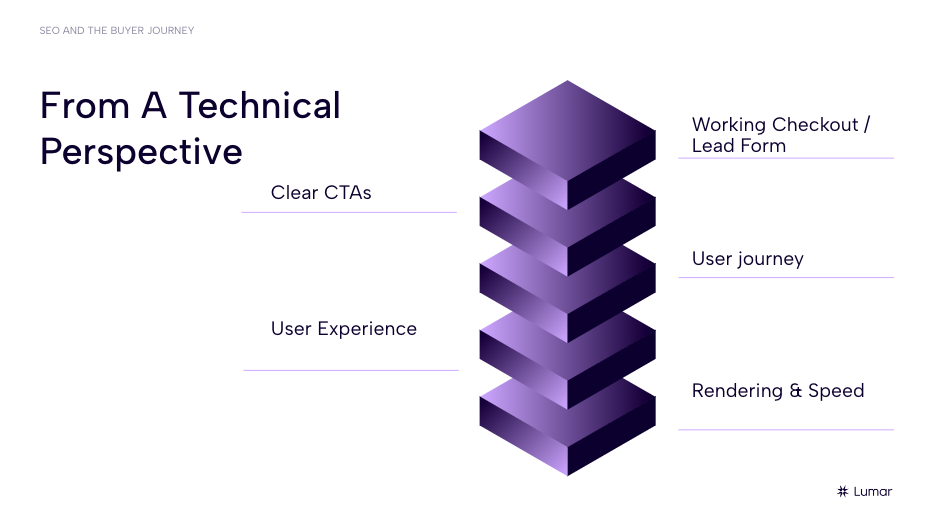
Loyalty and re-engagement
“A lot of the time, once people have converted, they can be forgotten about,” says Brannon, “And this isn’t a good thing!”
Your SEO strategies shouldn’t focus on only driving new customers to your website. SEO should support the entire customer lifecycle.
“Your most valuable customers are the ones that are already bought into what you do,” says Brannon, reminding marketers and SEOs that it is cheaper and easier to retain customers than to acquire new customers.
“A lot of shoppers consider themselves to be loyal [to a brand] after five purchases from the same brand,” says Brannon, “and a lot of people who work in e-commerce know that that’s sometimes harder than what it sounds like; to keep re-engaging people and keep people coming back.”
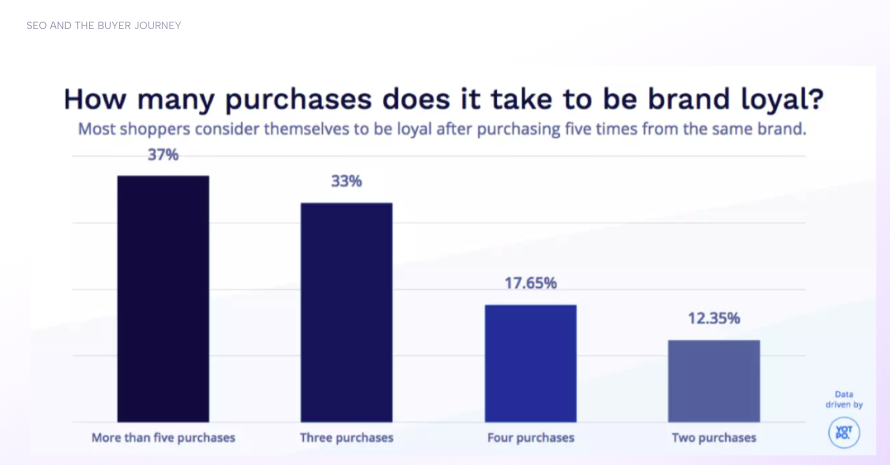
So how does Brannon suggest we build brand loyalty? She offers four key ways to do so:
- Leverage online reputation.
- Integrate seamlessly with other online channels.
- Provide ongoing support to customers.
- Give consumers what they need (before they know they need it).
Brannon points to Lumar’s resources – including our Website Intelligence Academy, blog, eBooks, webinars, and FAQs, as a good example of providing ongoing support to your customers.
SEO at scale
Brannon also offers advice for scaling SEO strategies on enterprise-scale websites. She suggests:
- Building out keyword research across all areas of the funnel and prioritizing your output based on things like search volume, potential traffic, or, crucially and ideally, what makes the most sense for your customer journey. (Don’t just chase volume!)
- Structuring content types and templates that can be recreated for different topics.
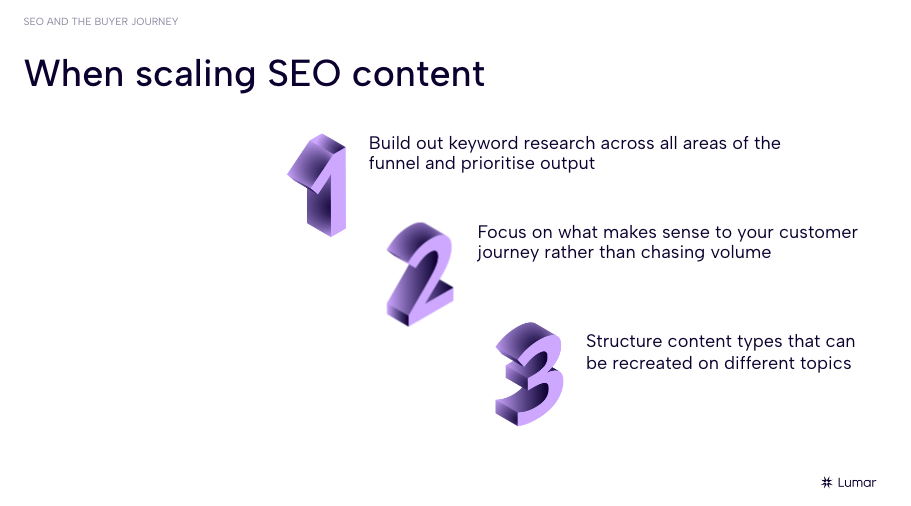
Generative AI and SEO content
In closing, Brannon has some advice in response to the question of whether it’s possible to use generative AI to create your SEO content. She advises that, at the moment, it’s better not to.
In her own experiments, Brannon has been disappointed by the quality of AI-generated content.
“AI can’t showcase your industry experience,” she warns. “AI content isn’t always accurate and trustworthy. And AI can be easily identified as AI.”
That said, Brannon does point out where AI can be useful in SEO today:
- AI content can rank well for long tail terms.
- It can be used to give inspiration – for content ideas, content structure, etc.
- It can be used to create structured data and other technical assistance. This is useful if you are struggling with securing developer resources or buy-in.
Brannon points to the importance of always having a human editor check any content that is AI-generated, due to the quality issues and its tendency to ‘hallucinate’ and provide misinformation.
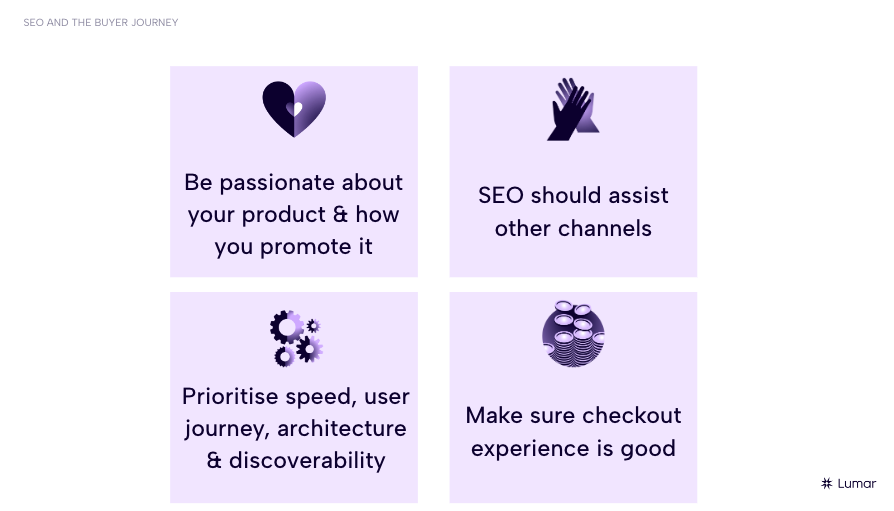
Connect with the webinar speakers
Featuring:
- Sophie Brannon — SEO Director, RushOrderTees
- Jon Myers — Founder and Managing Director, Ascending Media
Further SEO resources
- Get a Lumar platform demo: See how Lumar’s robust technical SEO platform can help you improve your SEO efforts at scale.
- Explore the Lumar Website Intelligence Academy to dive deep into more SEO and digital marketing topics.
- Learn more about brand awareness and SEO in this deep-dive article.
- Follow Lumar on LinkedIn to stay up-to-date with the latest news and best practices in SEO.


